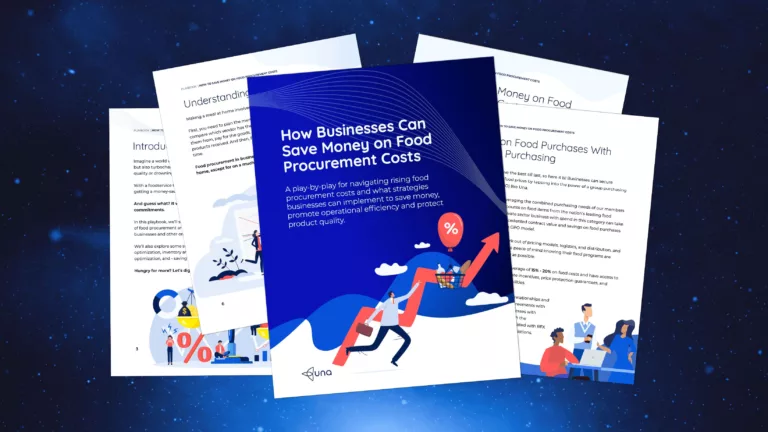
How Procurement Can Add Value to an Organization
Discover how procurement can add value to an organization through supplier innovation, safeguarding the brand, protecting quality, and more.
By Hugo Britt | June 16, 2022
Procurement teams that sit in the lower part of the maturity curve are often guilty of having “tunnel vision” or a tendency to focus on a single objective: cost savings.
While focus and determination are admirable qualities, a narrow focus on cost means the organization is missing out on a whole host of other benefits ranging from stronger supplier relationships to efficiency, innovation, sustainability, and more.
In many cases this situation has come about due to pressure from above. During the Covid crisis, for example, many procurement teams were told to drop all other priorities and focus on the core task of slashing costs. An AT Kearney survey found that over half of CFOs see the value of procurement “through the lens of hard cost savings only, and fail to understand procurement’s broader strategic impact.”
How procurement can add value
If this is the case in your organization, the onus is on you (the procurement team) to educate others on the broader value procurement can bring to the table.
Focusing solely on cost also creates headaches including damaged relationships with suppliers and product/service quality issues. At the same time, it’s important from a career perspective to understand that the job of cost reduction is being increasingly automated, meaning procurement professionals need to look for other, creative ways to generate value or risk becoming irrelevant.
Taking cost reduction as a given, here are five other ways procurement can add value to any organization.
Focusing solely on cost negates all of the other value procurement is able to bring to an organization in the form of stronger supplier relationships, increased efficiency, improved innovation, and more.
1. Generating supplier innovation
Supply chain innovation is your organization’s competitive edge. If the procurement team can tap into the massive potential for innovation among suppliers of all sizes, your organization stands to gain everything from new technology to process improvements.
Importantly, innovation doesn’t necessarily mean the latest algorithm or gadget. It could simply mean a smarter way of doing things, such as a small process change that increases efficiency or helps reduce your environmental impact.
Enable supplier innovation by identifying your pain points and sharing them with your network. Ask your suppliers for feedback – it’s very possible they have plenty of game-changing ideas but won’t share them unless prompted. Finally, keep in mind that transactional relationships with suppliers rarely yield anything beyond what you’ve paid for. Concentrate on supplier relationship management to broaden the conversation and encourage the flow of ideas.
2. Ensuring business continuity
Sourcing managers have a responsibility for keeping the business running through a steady flow of essential goods and services. We can do this through business continuity management for every category. This involves understanding our exposure to risk, then preparing ourselves to face supplier disruptions of every size and shape.
Procurement needs to anticipate problems, find ways to deal with them (such as discovering alternative sources of supply), mitigate the impact of disruptions when they occur, and find ways to recover as fast as possible.
Covid-19 provided a perfect example of a situation where procurement had to step up and show its value by helping ensuring business continuity against a background of critical PPE shortages and unprecedented global supply chain disruptions.
3. Safeguarding the brand
There’s enough risk in an organization’s supply chain to make even the most experienced risk officer lose sleep at night. Through careful supplier selection and ongoing due diligence, procurement can help protect the brand against the risk of damage from supply chain breaches including human rights abuses and environmental damage. Suboptimal procurement decisions can also lead to brand damage caused by poor product quality or availability.
The key to reducing risk and protecting the brand lies in supply chain visibility and transparency, enabled through a centralized procurement database.
4. Driving ESG and CSR
Sourcing heroes have a vital role to play in helping an organization reach its ESG (Environmental, Social, and Governance) targets. This involves reviewing and optimizing the supply chain in terms of:
- Sustainability through working with accredited suppliers and innovating for greener products.
- Social outcomes by engaging diverse suppliers and supporting the community through local sourcing.
- Considering the Total Cost of Ownership rather than simply the purchase price of every product.
5. Protecting quality
One of the problems with a narrow focus on cost savings is that it will inevitably lead to a reduction in product or service quality. Pressuring suppliers to cut costs may cause them to review their specs, downgrade to lower-quality materials, outsource their manufacturing to a low-cost environment, or engage in shrinkflation. The result? Dissatisfied customers and brand damage.
Procurement can help ensure quality standards are met by adopting a quality assurance approach, tracking quality as a KPI and having honest conversations with suppliers about getting the balance right between quality and cost.
If done well, these value-generating activities will produce the added benefit of saving money for your organization. Whether it’s through supplier innovation, a more sustainable product, or risk reduction, procurement can create multiple sources of value while slashing cost, time, and effort.
Add value by bringing it all together
One thing that all of these value-generating activities have in common is that (if they are done well), they all have the added benefit of saving money for the organization. Whether it’s through supplier innovation, a more sustainable product, or risk reduction, procurement can create multiple sources of value while slashing cost, time, and effort.
If you are wondering where to start and which value avenue to pursue, be sure to align your procurement strategy to the ever-changing priorities and objectives of the wider business.
Need to bring more value to the table? Contact Una to learn how a group purchasing organization can help facilitate sourcing efficiency and profitability.









